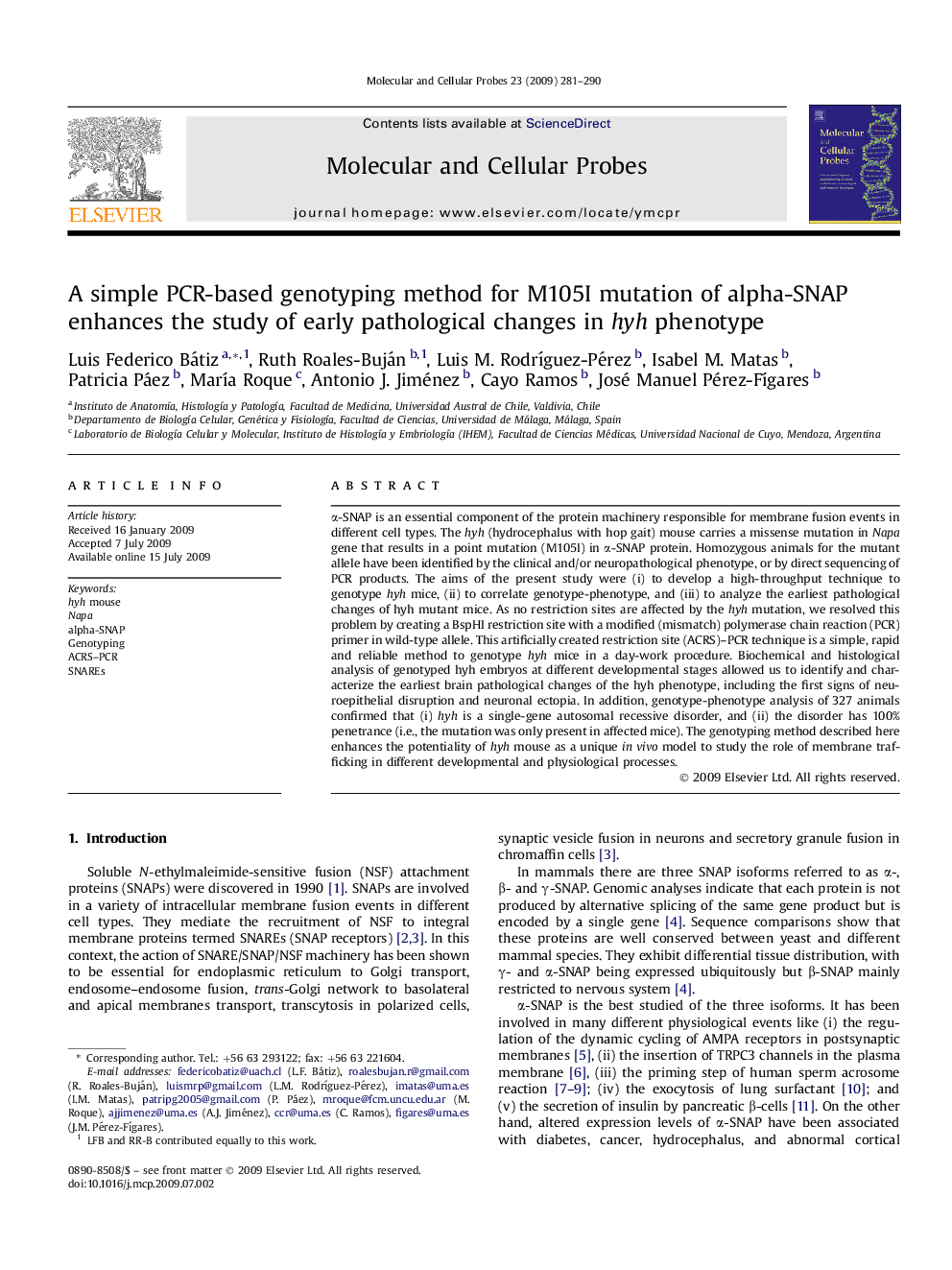| Article ID | Journal | Published Year | Pages | File Type |
|---|---|---|---|---|
| 2200055 | Molecular and Cellular Probes | 2009 | 10 Pages |
α-SNAP is an essential component of the protein machinery responsible for membrane fusion events in different cell types. The hyh (hydrocephalus with hop gait) mouse carries a missense mutation in Napa gene that results in a point mutation (M105I) in α-SNAP protein. Homozygous animals for the mutant allele have been identified by the clinical and/or neuropathological phenotype, or by direct sequencing of PCR products. The aims of the present study were (i) to develop a high-throughput technique to genotype hyh mice, (ii) to correlate genotype-phenotype, and (iii) to analyze the earliest pathological changes of hyh mutant mice. As no restriction sites are affected by the hyh mutation, we resolved this problem by creating a BspHI restriction site with a modified (mismatch) polymerase chain reaction (PCR) primer in wild-type allele. This artificially created restriction site (ACRS)–PCR technique is a simple, rapid and reliable method to genotype hyh mice in a day-work procedure. Biochemical and histological analysis of genotyped hyh embryos at different developmental stages allowed us to identify and characterize the earliest brain pathological changes of the hyh phenotype, including the first signs of neuroepithelial disruption and neuronal ectopia. In addition, genotype-phenotype analysis of 327 animals confirmed that (i) hyh is a single-gene autosomal recessive disorder, and (ii) the disorder has 100% penetrance (i.e., the mutation was only present in affected mice). The genotyping method described here enhances the potentiality of hyh mouse as a unique in vivo model to study the role of membrane trafficking in different developmental and physiological processes.
